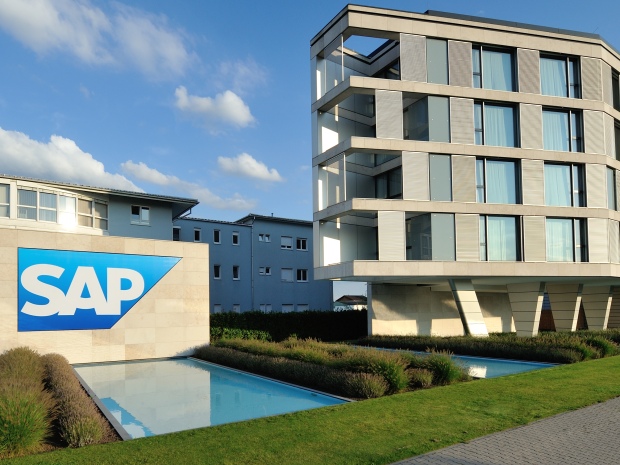SAP's cloud push: Here's what customers are planning to do


Momentum appears to be building behind a shift to the cloud among SAP users, with $39bn of the software giant's offerings potentially moving off premise over the next two years.
Although large enterprises with $1bn-plus turnovers are planning to migrate 46 percent of their existing SAP environment to the cloud, according to new research, cost savings are unlikely to be the main driver.
Executives quizzed for the HCL Technologies report are more likely to be turning to the cloud to improve business flexibility and gain access to new technologies than to save money.
"Very few quoted cost savings as a factor. In fact in some cases people expected costs to increase to enable that increased flexibility and agility. Cost wasn't one of those obvious things that people talked about achieving," said Mark Hirst, head of SAP enterprise application services at the IT services company.
Business agility and speed is given as the biggest reason for a cloud move, cited by 59 percent of executives, with access to new technologies next with 46 percent, followed by improved customer satisfaction on 43 percent.
"About 42 percent were quoting technical reasons for moving to the cloud and that is driven by two dimensions," Hirst said.
"Number one was in the SAP world there is an acknowledgement that clearly SAP strategy is moving towards cloud-related products. So there is a little bit of future-proofing that's going on in terms of, 'If you're investing in IT, you may as well make it on a future-proof platform'."
The second driver is simply a question of upgrades, with a number of businesses with a need to revamp systems seizing the opportunity to consider cloud as a platform.
Some 74 percent of organisations said SAP's Cloud Extension policy, which allows firms to trade on-premise licences for cloud ones, has made a move more attractive.
"It's early days. But, absolutely — the survey respondents came back and said they were encouraged by the new licence model. What we don't know is how many have taken it up yet," Hirst said.
Not only have more than four out of 10 businesses increased SAP cloud investments over the past year and expect to double that investment in the next 12 months but the proportion of firms weighing up the cloud is also telling.
"The number of people who have clearly considered a cloud strategy was extremely significant. Some 78 percent are now formally evaluating cloud-based platforms as part of their architecture for SAP," Hirst said.
"Clearly, it's not an emerging tech. It's something that's established and something people are considering. In some functional areas cloud is becoming the only option.
Tech Pro Research
"If you look at HR or salesforce automation or if you look at procurement, it's becoming quite unusual to choose non cloud-based platforms in those areas."
On top of that, even firms employing an on-premise platform for production systems are often using cloud-based infrastructure for the development, test and support environments, which can all account for a significant amount of spending.
Almost nine out of 10 of the companies in the report are going for a hybrid approach to the cloud.
"Are people wholesale lifting up their SAP estate and dumping it into the cloud in some form? No, that's not happening. They are sticking bits into the cloud and keeping bits on premise," Hirst said.
"What we're seeing is the bits that are core to their enterprise — or the bits that differentiate them — they are keeping those close and under their own control.
"The stuff that is more administrative, such as procurement, HR and maybe salesforce automation, they are putting off premise. So that gives you a hybrid splitting of the SAP estate into on and off premise."
But the SAP landscape is changing because of the availability of cloud technologies.
"So what would have historically been within one logical database is now being split over a number of applications. So rather than just being SAP HR, finance or procurement, now it's maybe SAP for finance on-premise but your cloud application is being sourced from SuccessFactors or maybe Workday," Hirst said
"So it's a hybrid in terms of how you house and manage your SAP estate, whether it's in the cloud or whether it's on premise, and also it's a hybrid in terms of the packages now as well."
The survey of 100 large SAP customers, conducted for HCL by Vanson Bourne, also highlighted that 56 percent of the organisations expect to use SAP HANA Enterprise Cloud in the future.
The $39bn figure for the value of SAP offerings moving to the cloud is based on complex calculations of the cost of the company's total installed base worldwide, which the HCL-Vanson Bourne research puts at about $86bn.
More on SAP and the cloud
- SAP's cloud and big data race against time
- SAP offers Business Suite via cloud: The slow migration begins
- SAP to expand Asia datacenter footprint in cloud drive
- IBM drops SoftLayer cloud storage costs closer to its rivals
- Oracle's in-memory option aims to beat the rest within 12 months
- SAP unites behind McDermott, HANA and new mantra
- SAP begins testing HANA on IBM Power Systems
- SAP's Plattner makes his case for HANA
- SAP's McDermott pushes free Fiori, simplification to appease customers